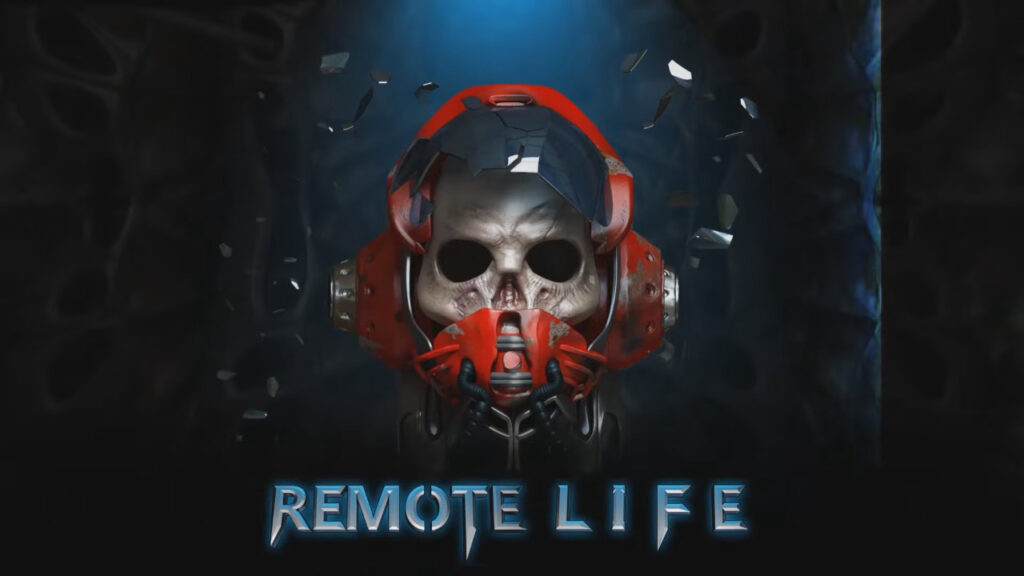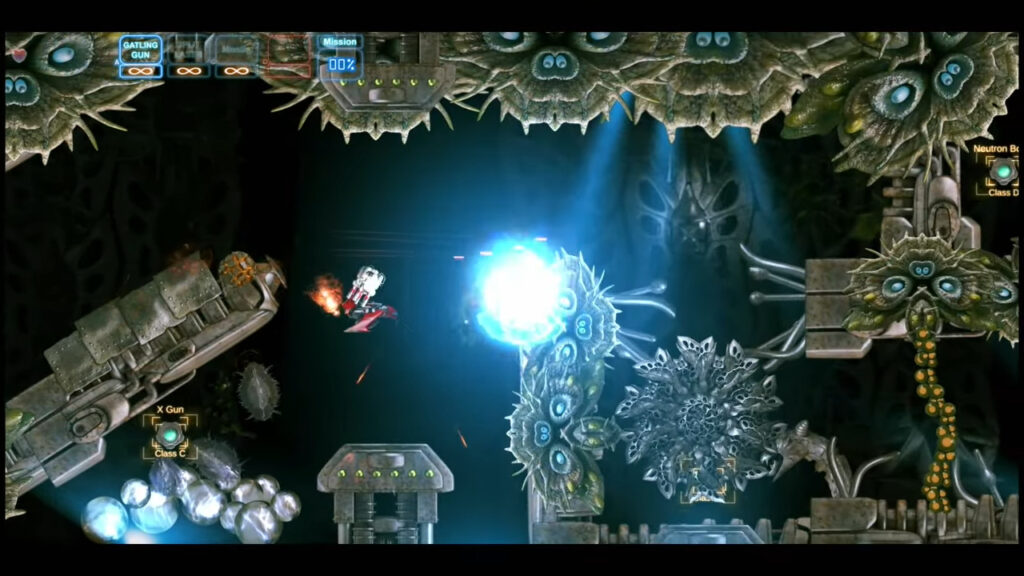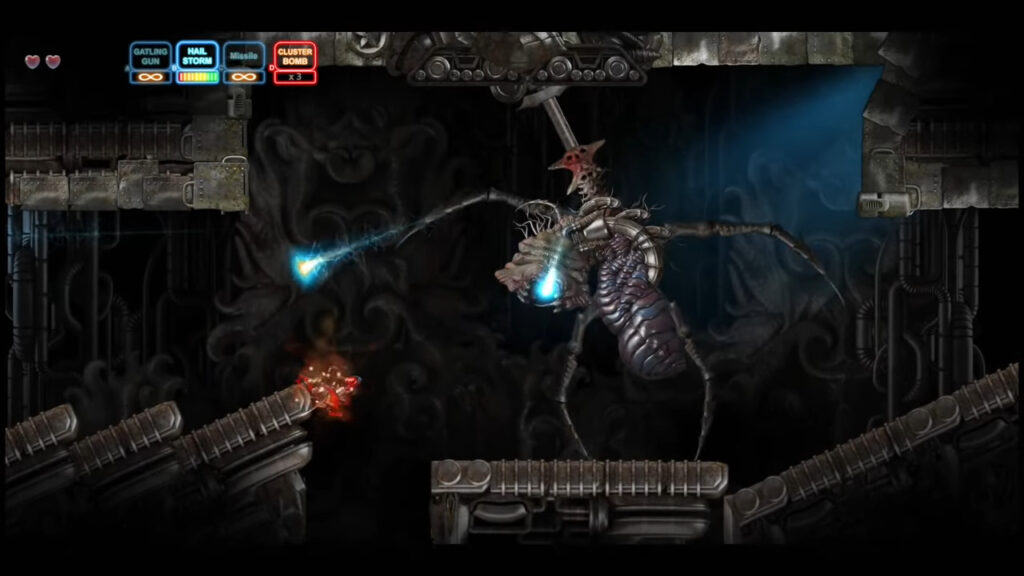
Developer: nextgamelevel
Publisher: Ratalaika Games
Platform: PC, Switch, PS4, PS5, Xbox One, Xbox Series X|S
Tested on: Switch
Remote Life – Review
Before we start to dissect Remote Life, the subject of today’s review, we should point out that the game was made by a single developer, who goes under the alias of nextgamelevel. It’s an incredible undertaking, and although the aesthetics didn’t quite gel with us, the overall degree of polish put into this game makes other titles from much bigger studios pale in comparison. Thanks to publisher Ratalaika Games, Remote Life can reach a (hopefully sizable) audience and convince the world of this man’s talent. Read on to find out why you should (or shouldn’t) consider adding Remote Life to your game library.
Story
Harkening back to the arcade games of yesteryear, Remote Life presents players with an incredibly simple story premise, delivered through a series of static images and short text blurbs. Here, we learn that an alien mothership is headed towards Earth, so naturally, the US military steps up to take it down. After an initial large-scale attempt to destroy the mothership from the inside fails, pilot John Leone steps up for what can only be described as a suicide mission: Leone is tasked with taking down the alien invasion single-handedly. There isn’t a lot more to this story, but given that it’s a shmup, it doesn’t really need anything more.
Graphics
While the individual elements that make up Remote Life’s graphics don’t look bad, the overall visual presentation of the game is a bit of a mess. This is because the game simply doesn’t seem to know which aesthetic style it wants to go for, instead mashing together modern 3D visuals with interfaces that look like they came from the ‘90s, with retro-looking explosions and lighting effects sprinkled on top. The result looks incoherent and while we have to admit that we were happy that this wasn’t just another game that went for a 16-bit look, we would have vastly preferred it had Remote Life gone all the way and presented us with a sleek, modern look rather than the hybridised mess that we’re getting here.
Sound
While Remote Life’s visuals feel inconsistent, to say the least, the game does commit to a very specific soundscape, built around retro sound effects, computer-generated voice work, and an adrenaline-pumping techno soundtrack. Taste in music is a highly subjective matter, and so your mileage may vary here, but we weren’t fans of the game’s OST. While we understood what it was trying to do with its high-tempo beats, we found it more annoying and distracting than immersive. The music felt like it undermined the sense of urgency laid out in the -admittedly simple- storyline and we would’ve preferred a more understated soundtrack with more gravitas.
Gameplay
It would be easy to dismiss Remote Life as yet another unremarkable twin-stick shmup that doesn’t bring anything new to the table. At first glance, this is definitely the case, but if you look a bit closer at nextgamelevel’s work, you might be pleasantly surprised. What Remote Life does isn’t ground-breaking in any way, shape or form but it gets a lot of things right about what makes the genre so fun in the first place. The game serves up exactly what you’d expect: taking control of Leone’s ship, you’ll need to blast your way through hordes of enemy alien ships, collecting power-ups and dodging enemy fire along the way. And when we say dodging enemy fire, we do mean it, because unlike shmups like the Darius or R-Type series, a single hit is enough to take you out. This does ramp up the difficulty level, and fans of the genre will find that there is plenty of challenge to sink their teeth into, although it does mean that Remote Life isn’t all that welcoming to newcomers. Those that persist will eventually find themselves taking on the inevitable boss battles, of course, and these don’t necessarily ramp up the difficulty level but they do add some tactical variety.
Even at the lowest difficulty setting, our initial attempts with Remote Life felt overwhelming. There is a lot to take in, whether it’s the various weapon types available to you and when to use them, or simply the fact that enemies can pop up where you least expect them to. Environments can change on the fly, with rotating walls and doors that open and close, and there are bombs that you need to take out before they explode and kill you in the process. Of course, many of these elements are simply hallmarks of the side-scrolling shmup genre, and the game relies on you to be tenacious and attempt the levels over and over again as you memorize enemy attack patterns and level layouts. This is a game that forces you to replay levels over and over again by design, with the main difference between it and its main competitors is that it doesn’t ease you into it, but rather throws everything but the kitchen sink at you straight from the get-go. As you play through the mission-based campaign, you’ll rank up in accordance with your performance in the levels. New ranks come with the benefit of better ships and new weapons to play around with, which bodes well for the game’s replayability, especially when combined with the various difficulty levels.
There is some variety to be found, as not every mission simply involves killing everything in sight -you’ll be tasked with escorting friendly ships occasionally, for example- and the clever, maze-like level designs keep things fresh. There is a sense of progress as well, as you’ll unlock better ships and new weaponry to play with as you rank up according to how well you perform. Despite the sheer difficulty level, the game also makes sure that although you’re always outnumbered, you’re never outgunned. Basic weaponry has limitless ammo but Remote Life is incredibly generous with ammo for your more powerful arsenal. Combine this with the clever implementation of twin-stick mechanics, allowing you to shoot in any direction and you’ve got a 2D side-scrolling shmup that feels not just challenging, but rewarding to get stuck into as well. With more than 15 missions to play through, at various difficulties, this certainly is a shmup to check out if you love blasting alien invaders to bits.
Conclusion
What Remote Life lacks in consistent aesthetics, it more than makes up for in solid shmup gameplay. It’s a difficult game, and you’ll need to push yourself through the levels but if you’re willing to put in the work, you’ll find a very rewarding experience. Newcomers to the genre might find that Remote Life offers up more than they can handle, but if you’ve got experience with other shmups under your belt, then this is definitely a title worth checking out.









No Comments